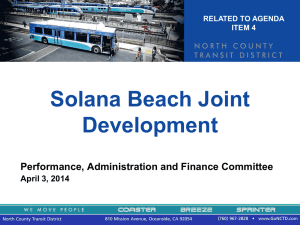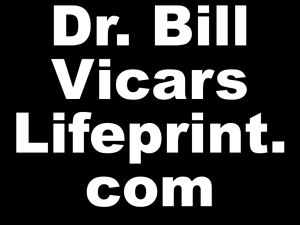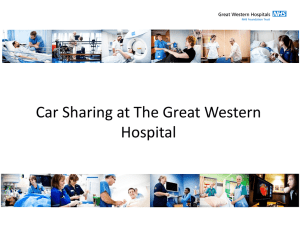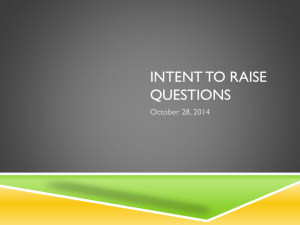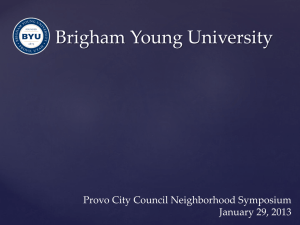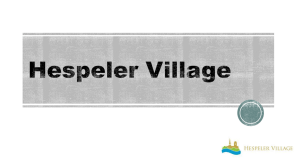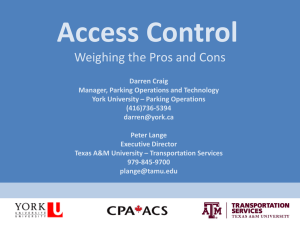Urban Transport Planning - Crisp Software Solutions
advertisement
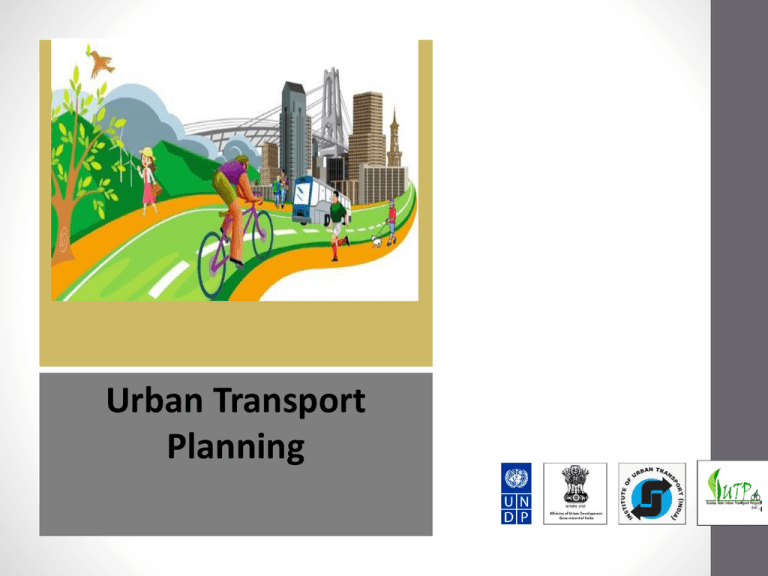
Urban Transport Planning 1 Contents • Approach for transport planning (Traditional v/s • • • • • contemporary planning) Urban Transport Planning Strategies Preparing Comprehensive Mobility Plans Role of Policies in Urban Transport Planning Concepts of Alternative Analysis Establish Service Level Benchmarks for cities 2 Urban Transport Planning • Transport planning is an exercise of evolving policies and strategies that give a rational direction to activities towards fulfilling a set of goals and objectives in Transport. • Transportation planning is an integral part of overall urban planning and requires a systematic approach. 3 Urban Transport Challenges • Growing Economy: • Road Safety: Increased Car Ownership Increased Traffic Volumes Increased congestion • Energy Consumption • Urban Sprawl: • Increased speed Increased conflicts among modes Increased accidents and fatalities More car dependency Increased trip lengths High costs for extending infrastructure and services Climate Change: Transport consumes 30% of total energy Increased demand for fossil fuel Increased GHG emissions Global warming Higher emission levels Air and noise pollution To address the dynamic complexities of urban systems, a multidisciplinary Planning Process is needed 4 Urban Transport Planning Approaches Traditional Approach Sustainable Approach Known as Automobile Approach Contemporary Approach 5 Traditional Approach Development of townships far from the city center Homogenous form. Predominantly residential. No mixed use Connected to the city center by broad roads, encourages automobile use Ad-hoc development; no public transport, NMT networks planned Source: Embarq Massive roads, with costly infrastructure such as grade separation Requires huge tracts of land needed Dwarka, New Delhi – Source: http://im.videosearch.rediff.com/thumb Image/videoImages/videoImages1/yout ube/rdhash774/KHGQIStNc9o.gif 10% - 15% of urban areas are taken up by ROAD infrastructure – a lot of space for cars Unidirectional traffic congestion: towards city center in the morning and towards the suburbs in the evening 6 Sustainable Approach Sustainable transport refers to any means of transport with low impact on the environment, and includes walking and cycling, as as well as technology to move people, goods, and information in ways that reduce its impact on the environment, the economy, and society Efficient, Equitable, and Environmentally friendly transport ! 7 Sustainable Urban Transport Planning - GOALS • Access: The City should be designed for people, not cars. It should be at least as convenient to live in a city without a personal motor vehicle as with one • Equity: Highest priority should go to public transport, walking, and non-motorized vehicles • Environment: Prevention of air and noise pollution • Economy: Users of cars and motorcycles should be charged for the full economic, environmental, and social costs of their transportation. • Integrated framework. Planning approach within a comprehensive policy • Public participation and transparency: It is important that the public be consulted in planning process 8 Sustainable Approach SUTP – Strategies • Avoid: Avoiding or reducing trips • Shift: Shifting to more environmentally friendly modes • Improve: Improving vehicle and fuel technology of all modes of transport to improve environmental efficiency from each kilometer travelled AVOID Reducing the need to travel SHIFT Changing mode choice IMPROVE Increasing the energy efficiency of vehicles, fuels, and transport operations Source: GIZ 9 Sustainable Approach Avoid Strategies: • Integrated Land use and Transport • Mixed Use Development – Transit Oriented Development • Information and Communication Technology Shift Strategies: • Non-Motorized Transport • Public Transport • Transportation Demand Management Cycling, Bangalore to Mysore http://www.thehindu.com/news/state s/karnataka/article419583.ece Improve Strategies: • Cleaner Fuels and Technologies • Inspection and Maintenance • Intelligent Transportation System Public transport, Bangalore India http://www.silcharchronicle.com/2012/06/bm tc-roll-out-volvo-longer-buses-6154.php/bmtcvolvo-buses 10 SUTP Summary Avoiding low-density sprawl Encouraging Mixed Land Use Transit oriented development Good urban design Not too much land for roads and parking 11 Source: EMBARQ … now let us understand the importance of Urban Transport Policy 12 What is a Policy ? • A policy is a guiding principle used to set direction • It can be a course of action to guide and influence decisions • It should be used as a guide to decision making under a given set of circumstances within the framework of objectives, goals and strategies to be adopted Features common to all good policies • State matters of principle • Focused on action, stating what is to be done and by whom • An authoritative statement, made by a person or body with power to do so 13 Policy Options • Supply – Network, Public Transport, NMT, Parking, Environment • Demand – Congestion pricing, Parking pricing • Implementation – Institutional, Financing • Operation – Fare Fixation, Licensing 14 National Urban Transport Policy Vision • To recognize that people occupy center-stage in our cities and all plans would be for their common benefit and well being • To make our cities the most livable in the world and enable them to become the “engines of economic growth” that power India’s development in the 21st century • To allow our cities to evolve into an urban form that is best suited for the unique geography of their locations and is best placed to support the main social and economic activities that take place in the city. 15 Setting Policies 1. Definition -What problem is the plan intended to solve? 2. Projection -How will the situation develop if the problem continues? 3. Constraints -What are the limits of finance, time, etc. within which planning must take place? 4. Option -What are the alternatives and their pros and cons? 5. Formulation -What are the main alternative plans, i.e. packages of available option within the prevailing constraints? 6. Testing -How would each of the alternative plans work out in practice? 16 7. Evaluation -Which plan gives the greatest value (within the constraints) in terms of solving the problems already defined … now let us identify some GAPS in the existing planning process, before we understand how the process ideally should happen….. 17 Gaps in Planning Process Lack of vision and holistic approach Weak Coordination between Landuse and Transport Lack of public participation and engagement Gaps Data Challenges – Standards, Collection, Repository Institutional Challenges Inadequate Planning Capacity 18 … now let us understand the process of Urban Transport Planning 19 Transport Planning Process An urban transport planning is a cycle - logical sequence of tasks starting from .. • Vision /Goals / Objectives • Strategies • Proposals • Alternate Analysis • Institutional Framework • Finance Vision Financing Institution Alternatives Goals & Objectives Strategies Proposals /Projects 20 Transport Planning Process Vision • The vision statement is a guiding principle to develop strategies • Adheres to the needs of the population • Transport vision of the city should encompass all elements of a sustainable transport system 21 Transport Planning Process Goals and Objectives The goals and objectives of the planning process provide more granularity to the vision statement They provide the concepts of • • • • • • • • • • Equity Safety Integrated planning Use of public transport Promotion of non-motorized modes Accessibility Travel demand reduction Reliability Clean energy usage Use of technology 22 Transport Planning Process Transport Strategies 1. Integrated Land use and transport strategy TOD National Urban Habitat Mission 2. Network Development Strategy 3. Mobility Corridor Strategy 4. Public Transport Strategy 5. Bus augmentation Higher order MRTs Intermodal Integration Land Use & Transport Strategy Travel Demand Management Strategy Planning Strategies Non- Motorized Transport Strategy Cycles/cyclists Pedestrians 6. Freight Management Strategy 7. Parking Strategy 8. IPT Strategy 9. Traffic Management 10. Travel Demand Management Strategy Network Development & Mobility Corridors Traffic Engineering Measures Public Transit Improvement Strategy Freight Management Strategy Non-Motorized Transport Strategy 23 Transport Strategies 1. Integrated Land Use & Transport Strategy • • Transport network is dependent on land use. Integrated land use and transport should promote balanced regional growth This strategy should focus on • • • • • Accessibility Connectivity Transit oriented development Structural form of urban growth Mixed land use developments to minimize vehicle trips 24 Transport Strategies Integrated Land Use & Transport Strategy What is Transit Oriented Development ? A Transit Oriented Development (TOD) is a mixed-use residential or commercial area designed to maximize access to public transport and incorporates features to encourage transit ridership 25 Design for a livable, sustainable future !````` Transport Strategies 2. Network Development Strategy (Mobility Corridors) Identify principle corridors where the emphasis will be on moving people i.e. focusing on mass transit corridors with NMT facilities By identifying certain primary corridors as ‘Mobility Corridors’, these priority transport for throughput corridors increasing by transit system(s). having get the public 26 Transport Strategies 3. Non-Motorized Transport Strategy NMT strategies are an integral part of public transport strategies • • • • • • • • • Establish connected walking networks Adequate walkway and path surfaces Create bike lanes and bicycle boulevards Correct roadway hazards to NMT Use street furniture and pedestrian friendly design features Integrate cycling with transit. Provide bicycle parking/rickshaw stands and encourage sharing Address security concerns of pedestrians and cyclists. Develop /encourage bike rentals/sharing 27 Transport Strategies 4. Freight Management Strategy Unregulated loading and unloading of freight traffic add congestion on the roadways. • • • • • Restricted delivery times Use of small and medium size vehicles with modern emission controls Develop Freight Terminals/warehouses Relocation of wholesale markets to the periphery Construction of bypasses 28 Transport Strategies 5. Parking Management Strategy • Development of a parking strategy is necessary in order to shape the framework for the future provision, management and maintenance of parking facilities • Development of Parking Strategy is based on an understanding of the parking supply and demand position in City Parking strategies to be considered for any city include • • • Restriction of on - street parking Parking Pricing Off Street parking facilities 29 Transport Strategies 6. Traffic Engineering Measures Road Markings Traffic Separator/ Channelizer Signages Traffic Calming Techniques Footpath Repair Signalization of Works Intersections Road Resurfacing/ Rectification - Strengthening of Patch Repair Road Stretch Intersection Improvements Delineators One Way Streets Speed Limits 30 Refer to Traffic Engineering and Management Module for details on traffic engineering measures Transport Strategies 7. Demand Management Strategies • To increase public transport modal shares, additional demand management interventions need to be implemented • Congestion Pricing - mobility management strategy to reduce traffic congestion. • Congestion Pricing Demand Management through restricted parking supply or imposing restriction of vehicles 31 Refer to Traffic Engineering and Management Module for details on travel demand management measures Parking Control Transport Planning Process Proposals / Projects A clear implementation strategy for the Plan needs to be in place along with clear phasing of schemes and initiatives. Projects may be classified as • • • Long Term Proposals Medium Term Proposals Short Term Proposals 32 Projects Long Term Proposals • Mass Transit Systems • • • • • • • • Metro / LRT / Mono Rail Suburban Rail BRT Intermodal Stations Truck Terminals & Intercity Bus Terminals Elevated Roads Freight Corridors Missing Roadway Links Long term proposals have to undergo Alternate Analysis process 33 Projects Medium term Term Proposals The medium term proposals are those whose effectiveness last up to 10 years • • • • • Off-street Parking Facilities Flyovers Pedestrian Subways ROBs / RUBs Intelligent Transport Systems 34 Projects Short term Term Proposals The short-term proposals include those schemes whose usefulness might last up to a maximum of 5 years • • • • • • Pedestrian Infrastructure Bicycle Network and Infrastructure Pedestrian Zones Demand Management Strategies Parking Management Junction Improvements 35 Transport Planning Process Alternative Analysis • Alternatives analyses, explores the different alternatives • It aids the decision maker, in identifying tangible and intangible costs and benefits. • Well-organized management of overall evaluation results are important in planning outputs • An important aspect of this process is public engagement and participation. 36 Alternative Analysis Definition - AA • AA is about finding best alternative to solve transport and related problems in a corridor or sub area • Is not a feasibility study • Identifies the best solution from various options 1. Alternative Analysis follows comprehensive planning 2. Alternate Analysis is done for a corridor or a sub – area 3. Planning horizon for AA is usually 15 years 4. AA evaluates a number of feasible solutions corridor/sub area and identifies the best solution for the 37 Alternative Analysis How is AA done? Process consists of 10 steps • • • • • • • • • • Set Goals and Objectives Set up Steering Committee Review Technical issues, Data, Models Define Scope of Services Framing the Analysis Identification of Alternatives (Conceptual) Final Definition of Alternatives Public Review Process Evaluation 38 Selection of Preferred Alternative Alternative Analysis - Toolkits and Guidelines; MoUD Transport Planning Process Institution and Capacity Building • Focus on establishing a central nodal authority (UMTA) responsible for all transport initiatives and planning for million plus cities • A capacity building program needs to be in place to enhance the subject knowledge of the personnel involved in planning 39 … now let us understand Comprehensive Mobility Plan (CMP) 40 Comprehensive Mobility Plan (CMP) • Long term vision of desirable mobility patterns for a city • Provides strategy and policy measures to achieve the vision • Follows NUTP, which emphasizes NMT measures, PT systems and sustainable systems 41 Role of a CMP City Development Plan Existing Comprehensive Traffic & Transport Study Master Plan Comprehensive Mobility Plan Approval of CMP from MoUD Alternative Analysis DPR level 1 (Feasibility Study) Appraisal for Funding (JNNURM) DPR level 2 (Detailed Design) Implementation Source: CMP Preparation Toolkit - Guidelines and Toolkits for Urban Transport Development in Medium Sized Cities in India – MoUD/ADB 42 What does a CMP do? • Provides vision for future transport in accordance with the NUTP • Defines corridors of movements • Focuses on moving people • Identifies projects that achieve the vision • Establishes Service Level Benchmarks • Identifies phasing and block costs of the project 43 What does a CMP NOT do? • Define the final system configuration of a corridor • Conduct feasibility analysis of projects • Detail cost estimates • Locate Stations and size them • Detail traffic engineering plans, including one-ways, etc. • Include Alternate Analysis • Include DPR 44 Comparison of CMP with other Studies 45 Steps involved in conducting a CMP • Evaluate existing scenario - Collect Data and List problems • Forecast future transport scenario - Develop Transport Demand Model • Set up Vision and Goals • Formulate strategies for development • Develop Mobility Plan - Set up measurable Bench Marks / Targets -Evaluate strategies - Long term schemes -Medium term schemes -Short term schemes • Prepare Implementation Plan - Block costs - Phasing • Establish Service Level Benchmarks • Recommend an Institutional frame work 46 SLB a tool used by public entities to make more informed decisions regarding the performance Service Level Benchmarks 10. Financial Sustainability of PT by Bus 1. Public Transport facilities • Make comparisons internally and with other organizations/entities • Improve performance using the lessons learned through this comparison process. • In all the CMP Studies, SLB is made Mandatory by the Ministry 2. Pedestrian Infrastructure facilities 3. NMT facilities 9. Integrated Land Use Transport System 4. Level of Usage of ITS facilities 8. Pollution levels 5. Travel speed along major corridors 7. Road Safety 6. Availability of Parking Spaces 47 SLB Indicators - 1 Service Level Benchmark Indicators to be identified Presence of Organized Public Transport System in Urban Area Extent of Supply / Availability of Public Transport Service Coverage of Public Transport in the city (Bus route network density) Average waiting time for Public Transport users Level of Comfort in Public Transport (Crowding) Percentage Fleet as per Urban Bus Specifications Pedestrian Infrastructure facilities Signalized intersection delay (%) Street Lighting (Lux) Percentage of City Covered with footpaths (wider than 1.2 mtrs) Non-Motorized Transport (NMT) facilities NMT Coverage (% network covered) Encroachment on NMT roads by Vehicle parking (%) NMT parking facilities at Interchanges (%) Level of Usage of Intelligent Transport System (ITS) facilities Availability of Traffic Surveillance System Passenger Information System (PIS) Usage of Global Positioning System Signal Synchronization Integrated Ticketing System Signalized intersection Public Transport facilities 48 SLB Indicators - 2 Service level Benchmark Indicators to be identified Travel speed (motorized and mass transit) along major corridors Average Travel speed of Personal vehicles (Kmph) Average Travel speed of Public Transport (Kmph) Availability of Parking spaces Availability of paid public parking spaces (%) Difference in Maximum and Minimum Parking Fee in the City Road Safety Fatality rate per lakh population Fatality rate for pedestrian and NMT (%) Pollution levels Annual Mean Concentration Range (µg/m3) Population Density - Gross (Persons / Developed Area in hectare) Mixed Land use on Major Transit Corridors/Network (% non residential area) Intensity of Development city wide - (Floor Space Index Master Plan/DP) Intensity of development along transit corridor Clear pattern and Complete network Area under roads (%) Proportion of network having exclusive ROW for Transit Extent of Non-fare Revenue (%) Staff /bus ratio Operating Ratio Integrated Land Use Transport System Financial Sustainability of Public Transport by bus 49 A Case Study on CMP….. Comprehensive Mobility Plan for Tirupati Source: UMTC Study, 2012 50 Primary Data Collection Sl. No. Name of the Survey Quantity 1 Road Network Inventory 2 Screen line Volume Count Survey 15 3 Turning Volume count survey 10 4 Bus stop Boarding and alighting survey 5 Passenger in and out count / OD survey Railway station Major roads 24 Bus stops 5 stations 6 Pedestrian Counts – mid blocks 10 locations 7 Pedestrian Counts – junctions 10 Locations 8 Outer Cordon Traffic Counts 9 Speed and Delay Survey 10 O – D Survey ( Including Goods Vehicles) 9 11 Bus Occupancy Survey 15 12 Household Interview Survey 13 IPT Operator survey 10 samples 14 NMT Opinion survey 50 samples 15 Parking duration survey ( On street ) 8 16 Parking Duration survey ( Off street) 5 17 Truck Operator survey 9 Major corridors 2500 samples 10 samples 51 Model Development Number of Internal zones-130 Number of External zones – 7 Total zones - 137 Number of Nodes – 752 Number of links – 1077 Total Road length – 1177 Km Number of city Bus Routes – 14 Number of Share auto routes - 5 52 Population Projection 2011 1,041,557 2021 1,275,695 2031 1,516,421 Targets – Bench Marks Index Average Speed Network Formulation of Average Running Speed for all vehicles Existing Target 17 30 Walkabilty (Footpath Length in Km /Road length in Km)x100 22% 100% Cyclability (Cycle track Length in Km/Road length in Km)x100 0% 50% Fatality (2010) No of fatalities/lakh population 7 0 IPT Index No of registered IPT vehicles / lakh population 760 500 Modal Share of PT Motorized Public Transport Trips/Total Study Area Trips 27% 50% Modal Share of NMT NMT Trips/Total Trips 32% 50% 16% 40 Accessibility (Work trips with Travel Time less than 15 min/ Total Trips) 53 NMT Proposals Elevated walk way from APSRTC Bus stand to Railway station From Railway station to Govindaraja Swamy Temple Walk ways on - Tiruchanur Road / Alipiri bypass Road / Chandragiri Road / Kapila Theertham Road 54 •Cycle tracks with effective width of 2m on all major roads •Foot paths on major roads PT Proposals Hop On – Hop Off Bus service connecting all Temples Commuter Rail – Guntur and Chittoor 55 •Mono Rail connecting Tirumala and Tirupati •BRT – Chandra Giri & Srikalahasthi Way Forward throughput of people and not vehicles • Adopts clean fuel technology in reducing air pollution 56 • An integrated holistic approach to transport planning is required that • Reduces the number of vehicles on the road • Enhances public transport system • Ensures effective traffic management measures to maximize • Need for a Comprehensive Urban Transport Act to address all the current issues, priorities and all modes • The Act must be consistent and aligned to NUTP principles • Need for a standardized Data Management Center • Institutional reforms and Capacity Building initiatives are needed • Identify certain new policies and bring in Policy Reforms in Transportation 56 Thank You! 57
